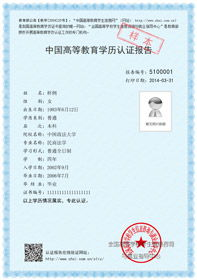Exploring the realm of language education, particularly Chinese as a foreign language, reveals a spectrum of academic courses, qualifications, and professional titles. One of the most significant, yet often queried, aspects is the English full name of the discipline dedicated to teaching Chinese to speakers of other languages. This article aims to demystify the terminology, delve into the core components of the field, and highlight its global importance.

Clarifying the English Full Name of 汉语国际教育
The English full name for 汉语国际教育, a discipline focused on teaching Chinese to non-native speakers, is "Teaching Chinese to Speakers of Other Languages" (TCSOL). This acronym captures the essence of the field, underscoring its international scope and educational aim. TCSOL is not just about language transmission; it also involves cultural exchange, pedagogical strategies, and a profound understanding of linguistics tailored for diverse global audiences. The name reflects the comprehensive nature of this academic and professional domain, emphasizing its relevance in fostering cross-cultural communication.
The Core Components of TCSOL
TCSOL encompasses several key components, including linguistic theory, methodological approaches, cultural knowledge, and practical teaching skills. Linguistic theory provides the foundation for understanding the Chinese language's structure and function. Methodological approaches cover various strategies for teaching Chinese efficiently and effectively. Cultural knowledge ensures that language instruction is embedded within the rich context of Chinese culture, enhancing learners' comprehension and appreciation. Finally, practical teaching skills enable educators to apply their knowledge in real-world settings, facilitating a dynamic and engaging learning experience for students.
Global Importance of TCSOL
The global importance of TCSOL cannot be overstated. As China's economic, political, and cultural influence expands worldwide, the demand for Chinese language education has surged. TCSOL professionals play a crucial role in meeting this demand, equipping individuals across the globe with the linguistic and cultural competencies needed to engage with Chinese communities. Whether for academic, professional, or personal purposes, learning Chinese opens up a world of opportunities, making TCSOL an essential field in today's interconnected society.
Challenges and Innovations in TCSOL
TCSOL faces various challenges, including adapting to diverse learning contexts, integrating technology into education, and ensuring cultural sensitivity. However, these challenges also spur innovations, such as the development of digital learning resources, online platforms for language practice, and pedagogical methods that cater to individual learner needs. The field is continually evolving, driven by a commitment to excellence and inclusivity in language education.
The Future of TCSOL
The future of TCSOL looks promising, with ongoing globalization and technological advancements opening new avenues for language education. Ongoing research in linguistics, cognitive science, and educational technology will continue to inform and refine TCSOL methodologies. As the world becomes increasingly multilingual, the importance of TCSOL will only grow, highlighting the need for dedicated professionals who can navigate the complexities of language teaching and cultural exchange with expertise and sensitivity.
In conclusion, the English full name of 汉语国际教育, "Teaching Chinese to Speakers of Other Languages" (TCSOL
), encapsulates a field of immense global significance. By fostering understanding and communication across cultural boundaries, TCSOL professionals contribute to a more interconnected and harmonious world. As the demand for Chinese language education continues to rise, the role of TCSOL will undoubtedly become more central, marking it as a vibrant and evolving field of study and practice.











评论区
提示:本文章评论功能已关闭